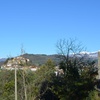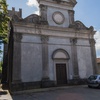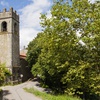Castle of Lugliano
The castle of Lugliano enjoyed a particularly privileged position between the valley of the river Pizzorna and that of the river Bugliesima, thus being able to control the most important towns of the Serchio valley and the Lima valley. In fact, the town rises on the top of one of the protrusions of the northern Monte del Marchio.
Constructed in its earliest phases between the twelfth and thirteenth centuries, the castle is still recognisable today in the layout of the ancient walls; however, only short sections which surrounded the highest part of the hill remain visible.
The main place of worship in the centre, originally dedicated to San Martino and already mentioned at the end of the tenth century, is the church of San Jacopo. The building has undergone numerous interventions over the centuries which have altered the original structure, such as those made internally and on the facade dating from the nineteenth and twentieth centuries. Inside there is a statue of Madonna with Child in polychrome terracotta by Benedict Buglioni, a wooden statue from the circle of Matteo Civitali and a painting by Matteo Rossetti.
Historical notes
The inhabited village of Lugliano was mentioned in written records as early as 853. It is then listed among the goods belonging to the House of Suffredinghi, then transferred to the city of Lucca in 1209. After being part of an imperial fief, in 1244, when the castle was mentioned for the first time, Lugliano was again surrendered by the Emperor to the City of Lucca, which placed it in the Vicariate of Val di Lima.











